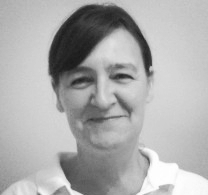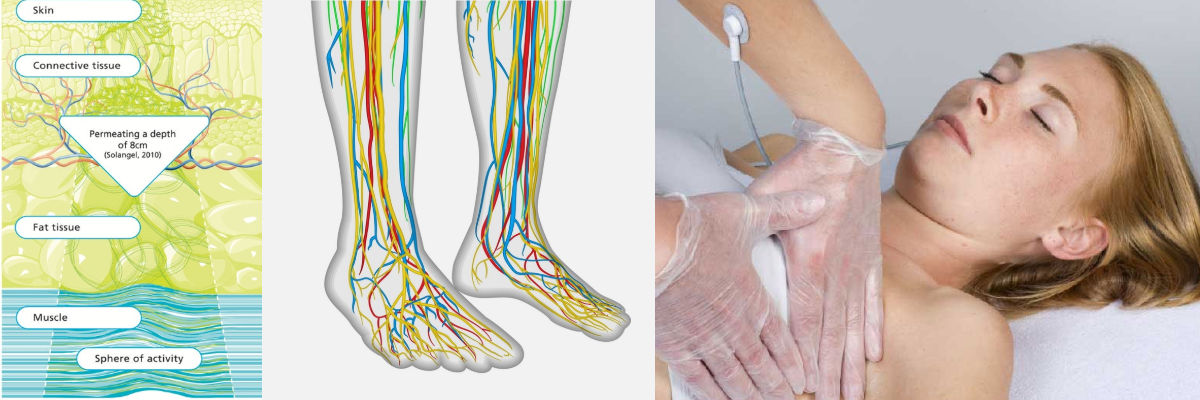Dr Anne Williams
Vodder MLD DLT Practitioner and Lymphoedema Nurse
Esk Lymphology
Foot First
161 High Street
Biggar
Scotland
ML12 6DL
Mobile 07939 068222


Dr Anne Williams has been a specialist lymphoedema nurse for over 30 years. Anne was a Lecturer in Nursing at Queen Margaret University, and has a background in cancer, palliative care and community nursing. She has worked in various lymphoedema services in NHS, voluntary sector and private settings in Scotland and London. Anne is a registered provider for various medical insurance companies to provide lymphoedema treatment and manual lymph drainage therapy (MLD).
Anne trained in the Vodder method of MLD in 1994 and has seen many positive changes in lymphoedema care and treatment over the passing decades. Anne also holds qualifications in Restore Scar Therapy, sports massage, and clinical hypnotherapy. Anne is an active researcher, teacher and writer, and has a variety of interest areas including self-care, compression therapy and manual lymph drainage. She has written over 40 journal papers and book chapters. Anne was awarded a PhD in 2011, after undertaking a research study into lymphoedema self-care.
Anne previously worked with NHS Lothian lymphoedema service, the lymphoedema self-management programme at The Haven Centres in Lanarkshire, and the NHS Highland Lymphoedema Project. Anne currently volunteers with Lipoedema UK.
Website
Now Offering Manual Lymphatic Drainage
Decongestive Lymphatic Therapy & DEEP OSCILLATION®
What is the Lymphatic System?
The lymphatic system is part of the body’s immune system and carries a fluid called lymph. It is a one-way drainage system made up of channels (lymphatic vessels) starting underneath the skin and ending in the neck. This system works together with the blood system to transport the lymph fluid and remove waste products. The lymphatic system acts like a waste disposal unit to help drain away fluids and waste matter known as lymph from the body’s tissues. It is also part of the body’s immune system and helps to prevent infection.
What is Manual Lymphatic Drainage (MLD)?
Manual Lymphatic Drainage is an advanced therapy aimed to enhance and stimulate the drainage of the lymphatic system. Encouraging the natural flow of lymph fluid around the body helping to eliminate waste products and reduce swelling as well as boosting the body’s immune system, promoting wellbeing and cleansing the entire body. It is important to support the lymphatic system as it performs a crucial function in our health and wellbeing.
What is Decongestive lymphatic therapy (DLT)?
Phase I – Decongestive Lymphatic Therapy / Intensive Phase
The prime objective of DLT is to reduce the limb size as much as possible, and in addition, to improve limb shape and skin condition. This intensive treatment may last for a period of 2-4 weeks and combines packages of treatments, ideally on a daily basis or every second day. Those with swelling that is considered to be mild or moderate and with a good limb shape, may not be required to have intensive treatment and would instead go straight to treatment phase II.
Phase I consists of four cornerstones of care
- Skin care
- Manual lymphatic drainage (MLD)
- Compression*
- Exercise and movement
*Short-stretch bandages or wrap compression systems are often the compression therapy of choice
Phase II – Maintenance
The goal of the long-term management phase, or ‘maintenance phase’, is to maintain and improve (if possible) the swelling reduction and benefits achieved in phase I. It is essential that treatment is continued immediately, and continuously, upon completion of phase I as unfortunately, the swelling will come back if not managed correctly.
Phase II also consists of four cornerstones of care
- Skin care
- Simple lymphatic drainage (SLD)
- Compression**
- Exercise and movement
**Graduated compression garments or wrap compression systems are usually the compression therapy of choice.
Management of Lymphoedema with DLT can offer independence, a feeling of empowerment and an improved quality of life. (DLT information With thanks to LymphConnect)
What is DEEP OSCILLATION®?

DEEP OSCILLATION® as opposed to externally applied, mechanical forms of massage therapy (e.g. vibration acting on the surface of the skin) Deep Oscillation works through the entire tissue layers including the connective tissue to a depth of 8cm (Solangel, 2010). Delivered via the vinyl-gloved hands of the Practitioner as a massage, the biologically effective oscillations work in the tissue segment undergoing treatment. DEEP OSCILLATION® is a non-invasive, non-traumatic treatment which is very well received by patients in different fields of application including Lymphoedema, Lipoedema, Lipo-Lymphoedema and Chronic Oedema. Because of it’s gentle application it is a unique treatment for acute and chronic injury and occupational conditions.
Pre-Operatively
Since Deep Oscillation possesses anti-oedema, lymph drainage, anti-fibrosis and detoxifying properties, it prepares the tissue for liposuction, makes liposuction more effective and durable and protects against adverse effects of the body sculpting procedure.
Post Operatively
Because it can be used at a very early post-operative stage, the healing process is accelerated, reduced pain, bruising and swelling, scar quality is improved, and local inflammation is inhibited and stopped over a sustained period.

